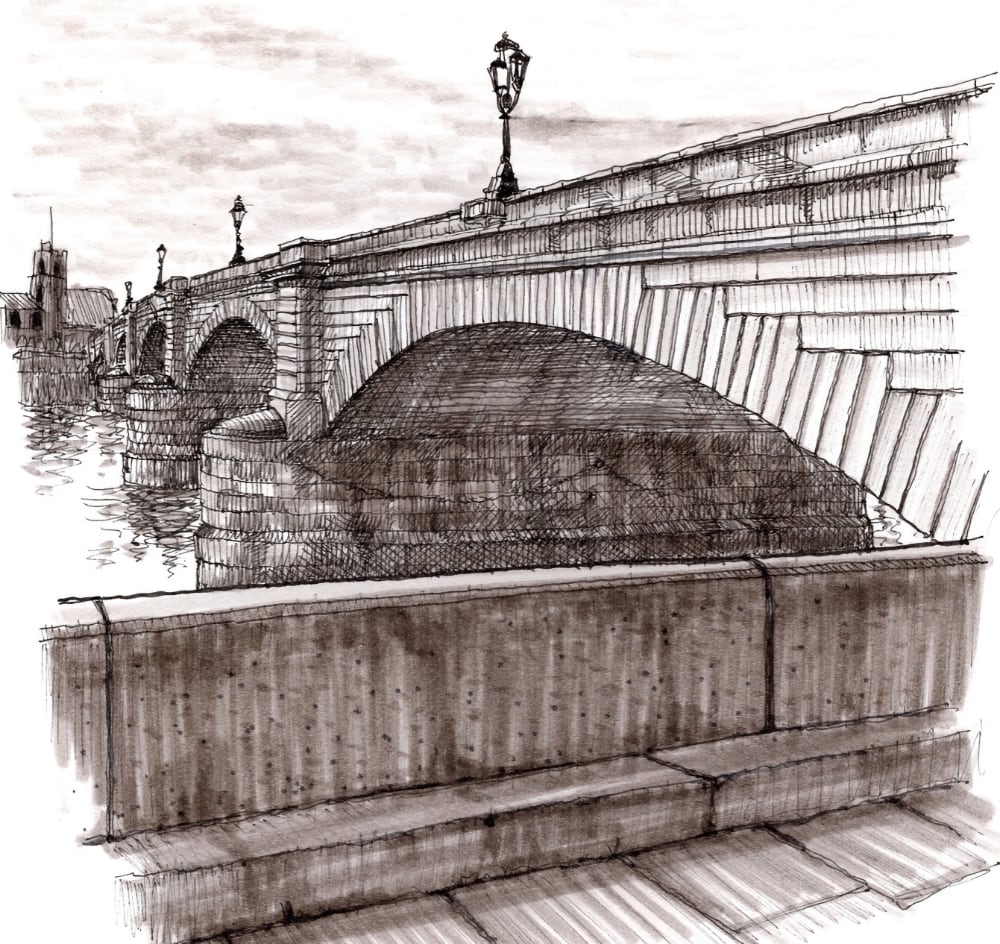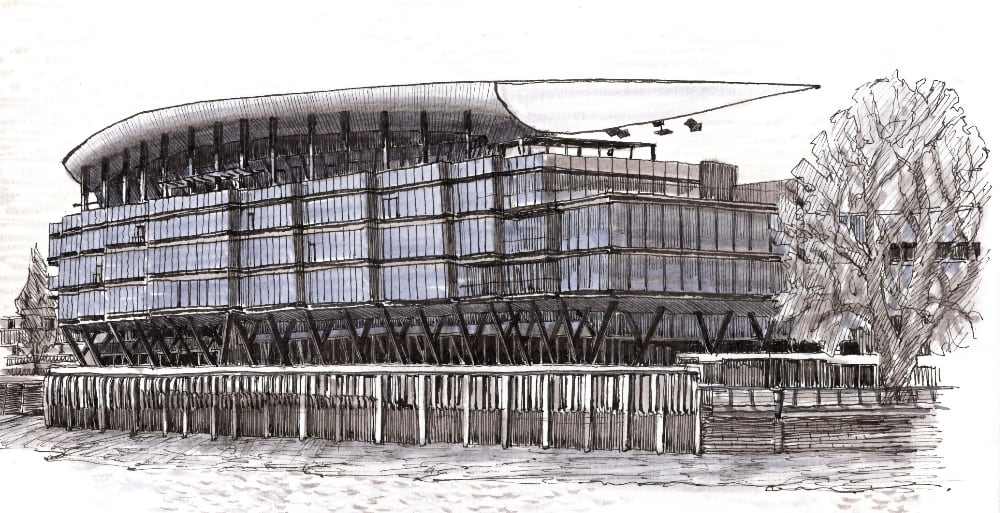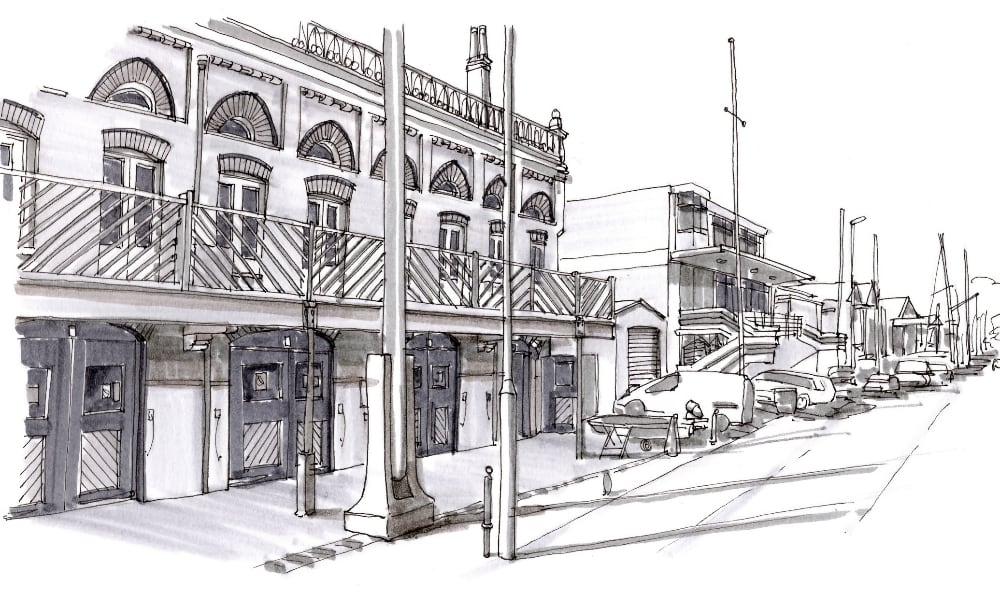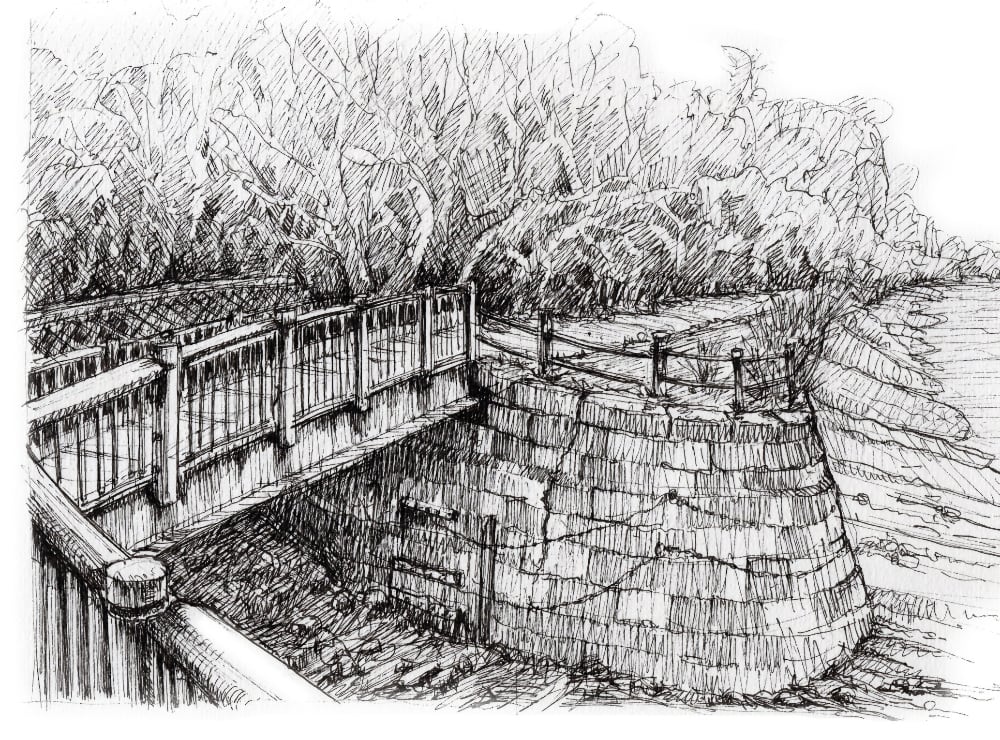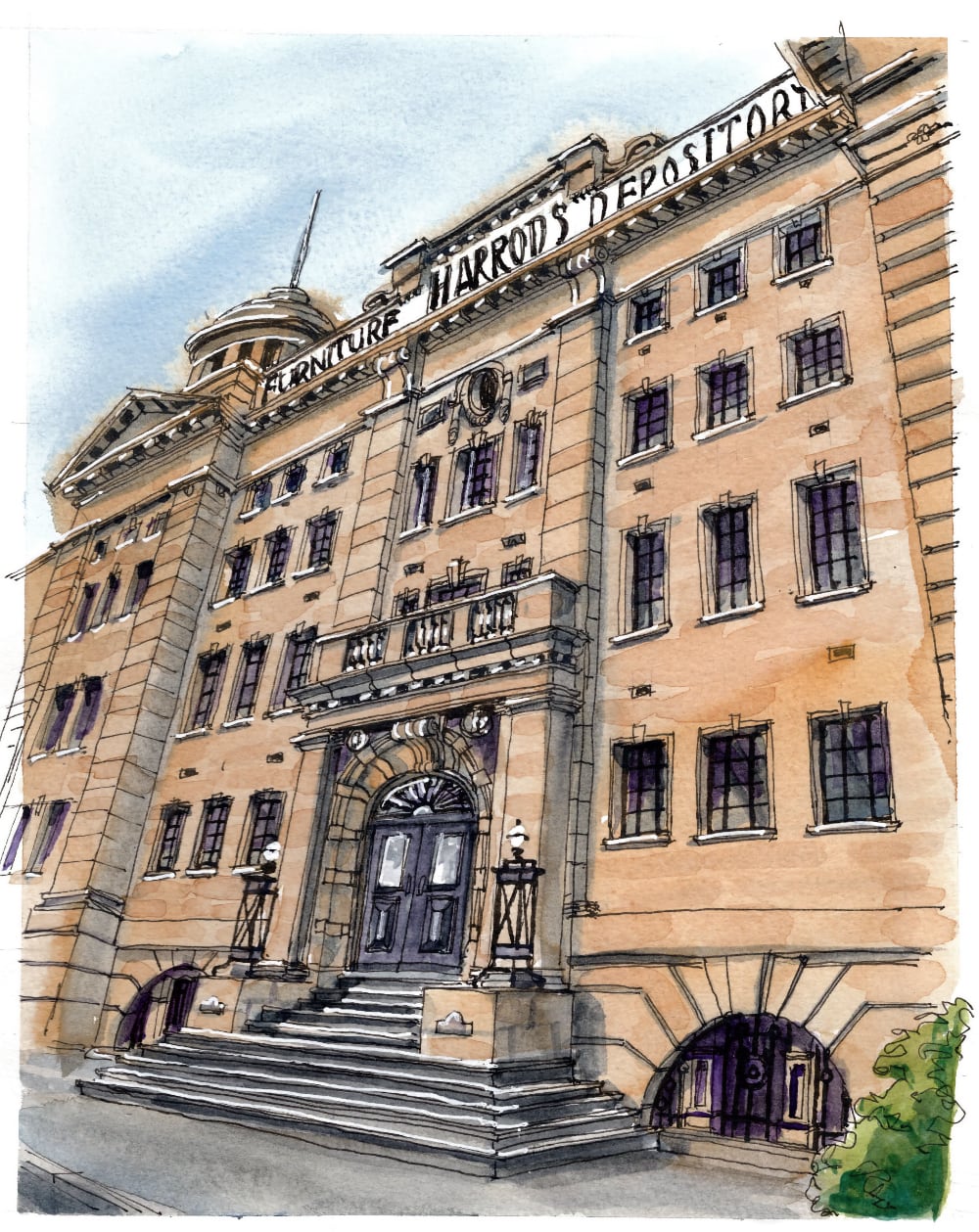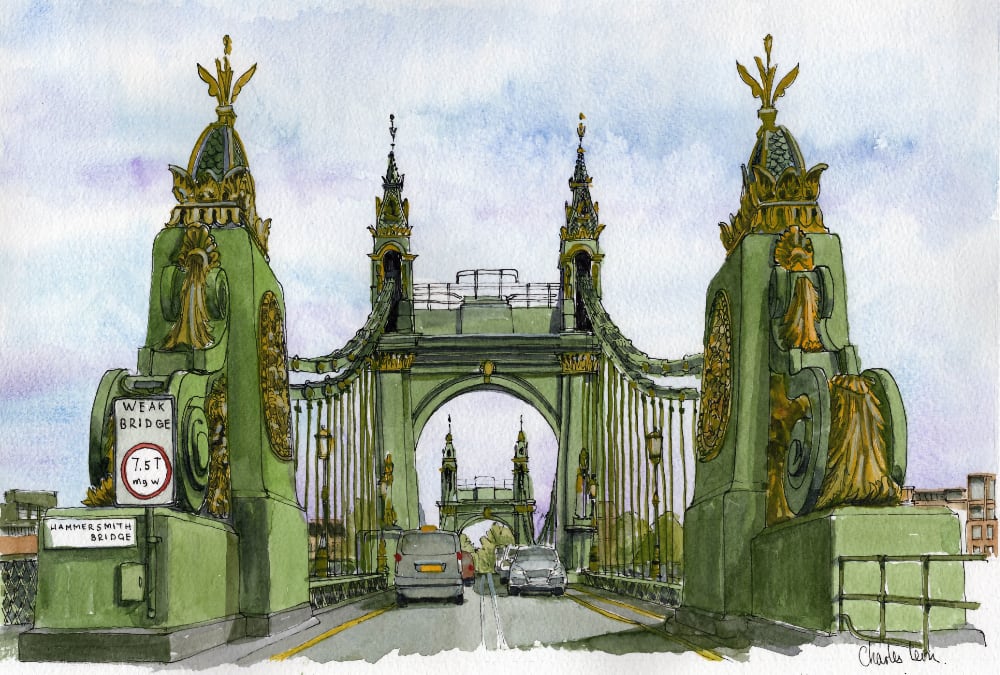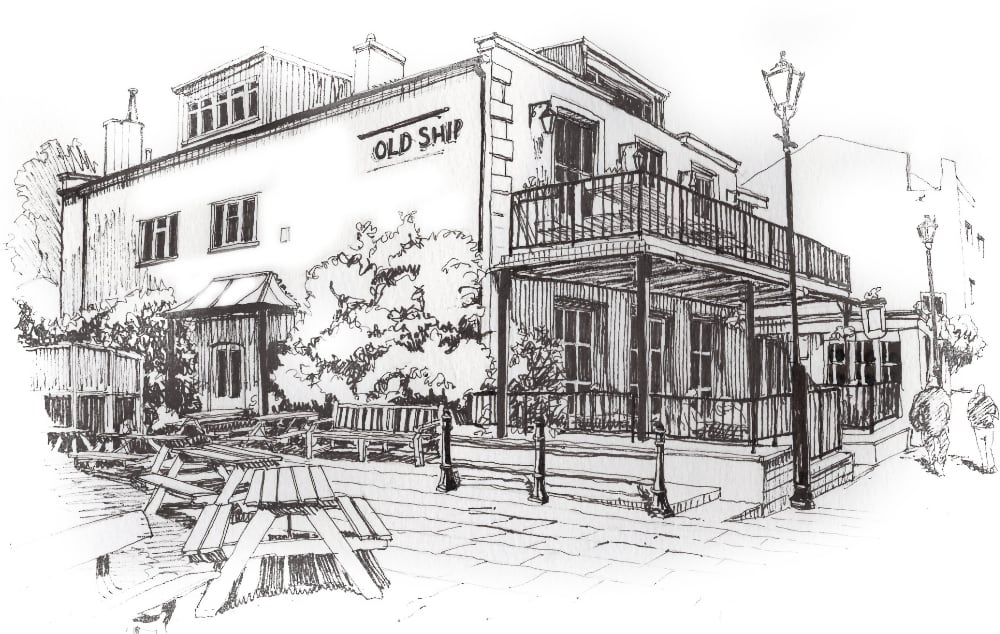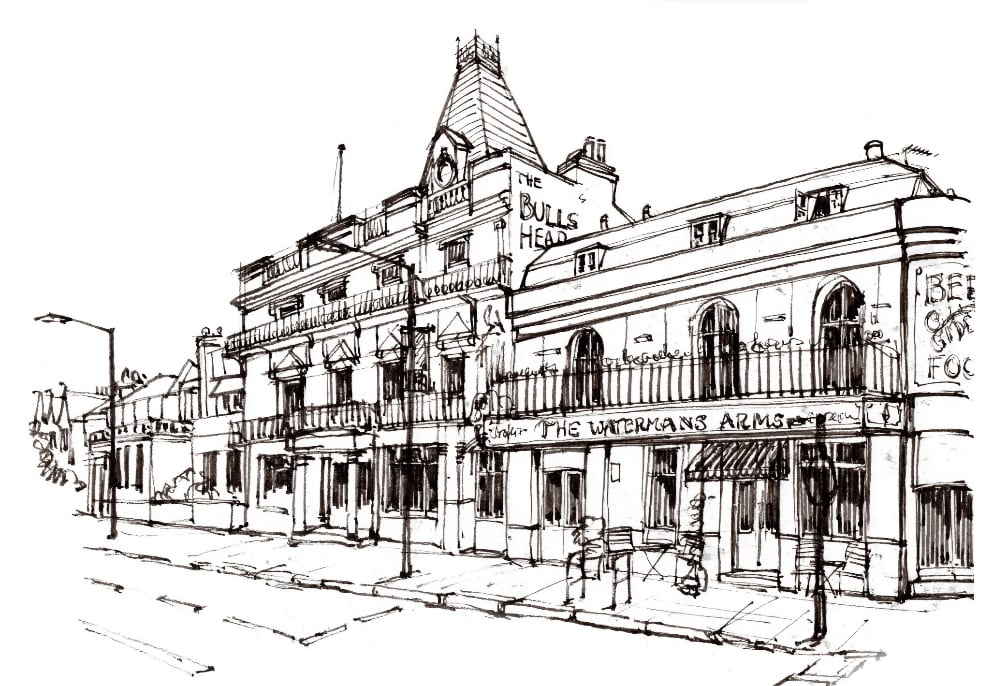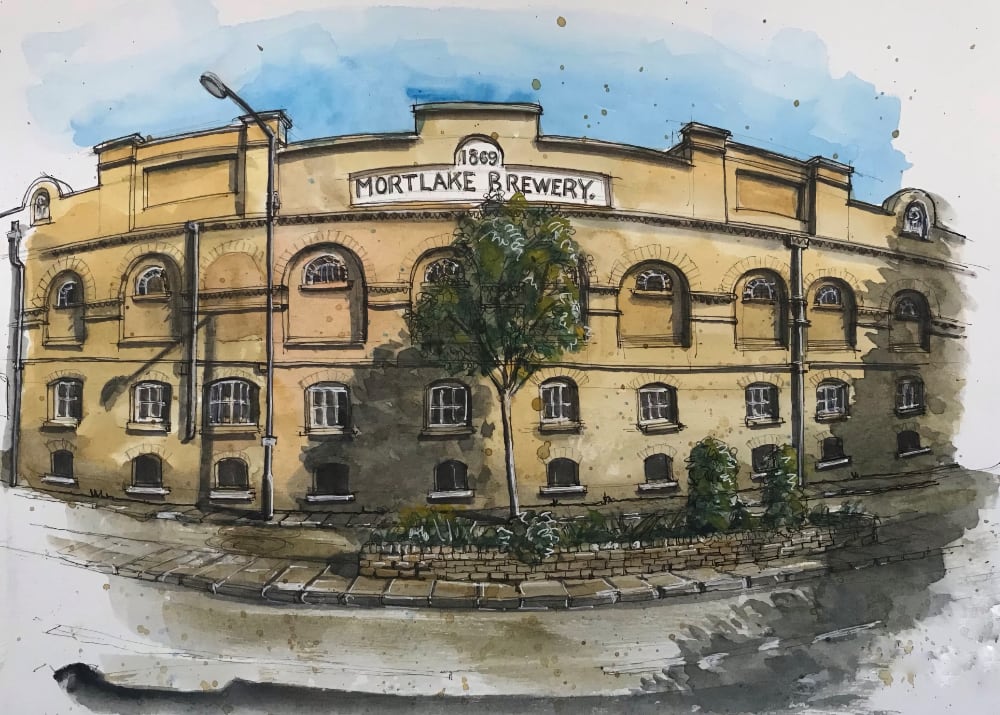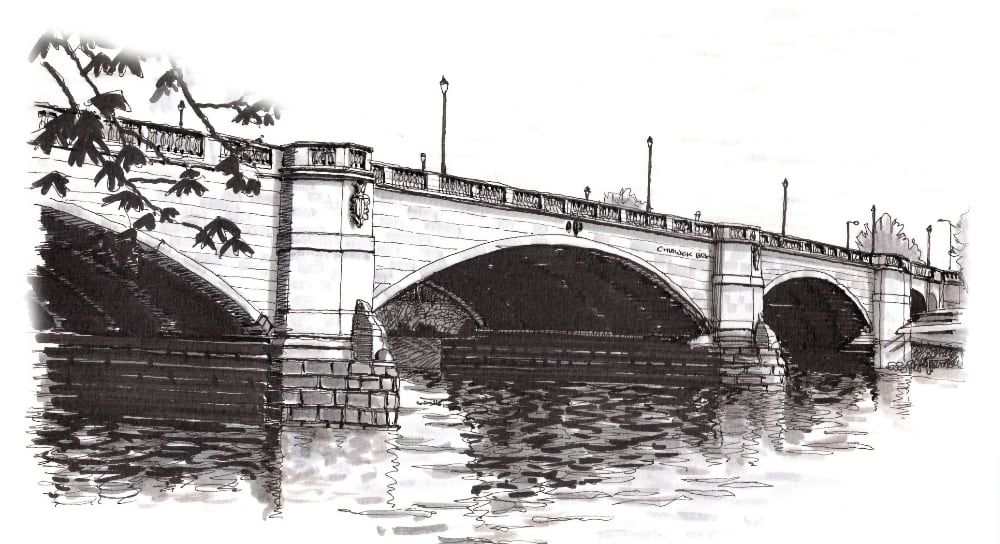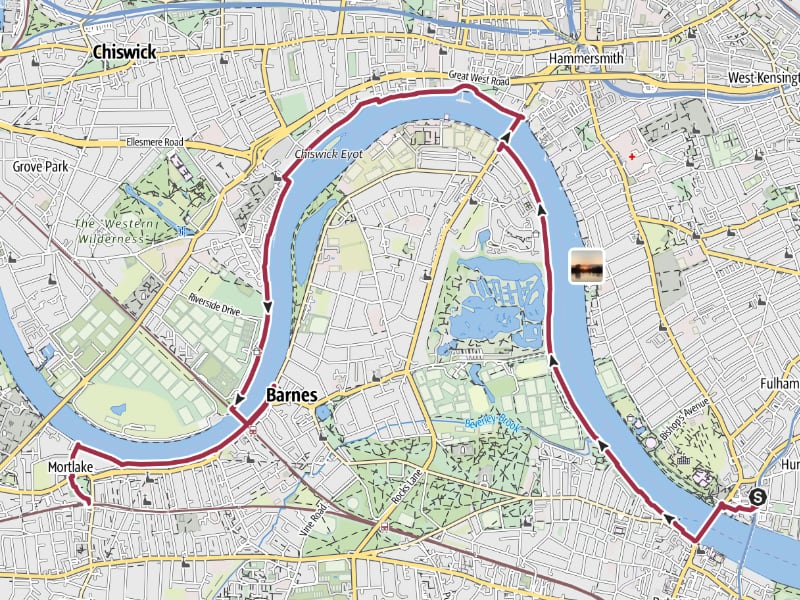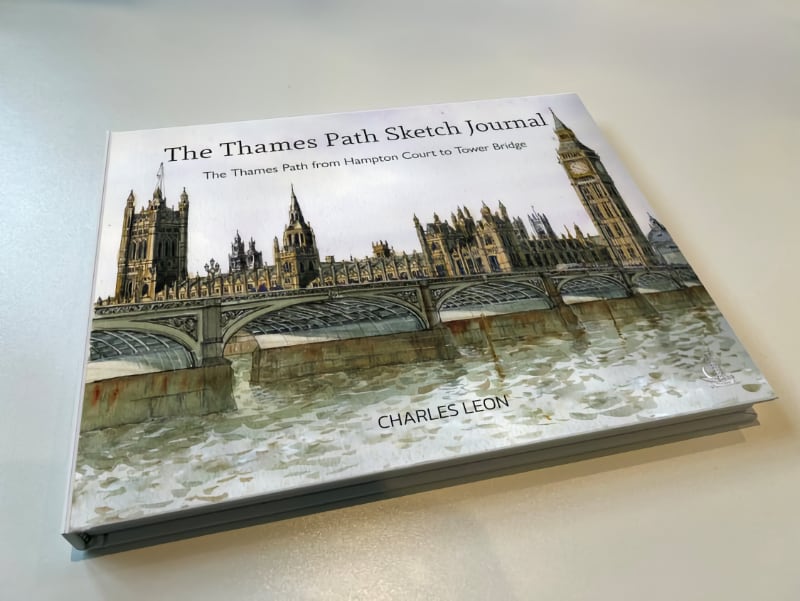Charles Leon started his professional life as a designer for theatre and film and then ran an award-winning hotel design consultancy. He is past president of the BIID and also lectures and gives talks and workshops internationally on creativity and design thinking.
For Charles, sketching is an integral part of the designer’s life and is a way to communicate ideas and tell stories. He is also the author of Barnes, Mortlake and Sheen, a Sketch journal, The Kew Sketch Journal and The Richmond Sketch Journal. His latest book, The Thames Path Sketch Journal, is released on 28th November 2024. This beautiful new book captures the rich history of the Thames through stunning sketches and detailed histories of the evolving structures and buildings that line its banks and span its waters, weaving together a unique narrative of power, pride, and pestilence.
Website: charlesleon.uk | Instagram: @CharlesLeonDraws | LinkedIn: @chleon
If you’re looking for a walk along the Thames, rich in history and views, follow the path alongside the Oxford-Cambridge Boat Race route. You can walk from Putney to Mortlake on both the north and the south bank; each side has its character, history, and stories. It’s an easy walk of 4 miles 375 yards (6.8 km), balancing scenic river vistas with beautiful architecture and offering plenty of places to pause for coffee (or a drink) or take in some culture. Following the rowers’ route, you can experience London’s riverside in its sereneest setting.
The walk begins at Putney Bridge, where the boat race starts.
Putney Bridge is a Grade II listed structure, linking Putney on the south side to Fulham on the North. Before the first bridge was built in 1729, a ferry connected the two banks.
Two medieval parish churches, St Mary’s in Putney and All Saints in Fulham (made infamous by the film The Omen, stand beside the bridge’s abutments, a rare sight along a major river. The first bridge between Fulham and Putney dates back to the Civil War when Parliamentary forces built a bridge of boats in 1642. Later, in 1720, Sir Robert Walpole—who would soon become Britain’s first Prime Minister—was reportedly inspired to build a bridge after being stranded on the Putney side due to an inattentive ferryman.
The first permanent bridge, designed by Thomas Phillips and Royal Navy Surveyor Sir Jacob Ackworth, opened in 1729. Known as Fulham Bridge, it was a toll bridge replaced in 1886 by the current stone structure. Mary Wollstonecraft, the pioneering feminist philosopher, allegedly planned to jump from the bridge in 1795 after discovering her lover’s infidelity.
The bridge was damaged in 1870 by a barge collision. It was later demolished to make way for the current bridge, designed by Sir Joseph Bazalgette. Completed in 1886, the stone and granite bridge is 700 feet long and 43 feet wide. The Prince and Princess of Wales opened and widened it in 1933.
This bridge is lively, and on race day, the surrounding banks and pubs are brimming with people cheering on their chosen team. But today, it’s all yours to enjoy at a gentler pace. I would advise a short stop at the Duke’s Head, a lovely riverside pub.
As you set off westward from Putney Bridge, on the North Bank, you’re walking into Bishop’s Park. Fulham Palace, in the park, had been a residence of the Bishops of London since AD 704 when Bishop Waldhere acquired the Manor of Fulham, a vast estate covering much of modern-day Hammersmith, Fulham, Acton, Ealing, and Finchley. Known as Fulham Palace because bishops were called ‘Princes of the Church,’ the estate saw its original manor house abandoned in the mid-13th century.
Historically, Fulham Palace served as a summer retreat for bishops to entertain important guests, including Queen Elizabeth I in 1601. In the 19th century, the bishops and their wives began sharing the house and garden with the community, hosting large parties and pageants.
After the Bishops of London vacated the palace in 1973, Hammersmith Council leased the property in 1975, opening a museum and art gallery. However, the palace and gardens were neglected. In 1990, a trust was established to oversee the property in collaboration with the council.
This green oasis has a bit of everything: well-manicured flower beds, open lawns, and riverside paths with benches ideal for a breather. You’ll probably spot rowers training on the River—after all, this is one of the best-known rowing stretches in the world.
Follow the Thames Path (North Bank) past Craven Cottage, the home of Fulham Football Club. Every day except match days, the path remains at the riverside, past the Crabtree pub and the Michelin-starred River Café.
Moving along Putney Embankment, on the South Bank, you’ll see several rowing clubs, each with its boathouse. Some of these date back to the 19th century, steeped in a tradition of sculling and sweep rowing. The boat houses give way to Leaders Gardens and the junction of Beverley Brook and the Thames.
A short walk from here, past Barn Elms, The Harrods Depository and the London Wetland Centre, you’ll reach Hammersmith Bridge, a stunning example of Victorian engineering.
Initially built in 1827, it was later rebuilt by the famed civil engineer Joseph Bazalgette in 1887. The bridge is undergoing various reinforcements and renovations and remains closed to cars today; its green and gold ironwork stands out against the blue of the River and sky.
It’s here that rowers encounter the infamous “Surrey bend” on the race route, where strategy and skill can make or break a team’s lead. This is an excellent spot for sketching.
Just beyond the bridge on the North bank lies a perfect spot for a coffee break at one of the riverside cafés along the Hammersmith riverside. It’s hard to resist the draw of an outdoor seat where you can sip something warm while watching the river flow past, dotted with occasional rowboats and narrowboats.
The next stretch brings you closer to Chiswick’s historic pubs and charming Georgian houses. The Old Ship, a pub dating back to the 18th century, makes for an atmospheric stop. Its riverfront terrace is ideal for enjoying a drink or a hearty lunch. Another option is The Dove, one of the oldest riverside pubs in London, where James Thomson is said to have written the lyrics to “Rule, Britannia!”
Continuing along, you’ll walk through Furnivall Gardens, a lovely, quiet patch of green with its flower beds, winding paths, and views of the River. This is an ideal place to pause, especially if you’re here in spring when the flowers bloom along the paths. From here, the River opens to give you a sense of the sweeping bends the boat race follows.
As you follow the River westward, you’ll catch glimpses of Chiswick Eyot, a small, uninhabited island in the Thames. This eyot (an old word for a small island) is only accessible by boat and is part of a nature reserve. It’s a fascinating sight, especially at low tide when mudflats emerge, attracting wading birds and adventurous children hunting for river treasures. This island is a notable marker during the race, roughly halfway along the course.
As you pass Chiswick Pier, the River opens, and you’ll enter Duke’s Meadows. This wide-open parkland feels wild and untamed in places with fields of wildflowers, tennis courts, and play areas. If you’re here on a Sunday, the food market is a must-visit for snacks, with everything from fresh pastries to handmade cheeses.
It is worth remaining on the North Bank until you reach Barnes Railway Bridge. This is one of the few railway bridges where pedestrians can cross the River.
Locke’s original bridge, completed in 1849, featured cast iron arch spans supported by brick piers. However, concerns about the longevity of cast iron structures led to the construction of a new bridge in the 1890s. This new bridge, built alongside the original, featured wrought iron bowstring girders and a pedestrian footpath, which remains in use today.
Once across and on the south bank, a little detour back along the River takes you to The Bulls Head Barnes. The pub’s origins date back to the 17th century, with the current building constructed in 1846 after being purchased by what would become Young’s Brewery in 1831. It began as a jazz venue in 1959 under the management of Albert Tolley, quickly establishing itself as a critical spot for both UK and international jazz musicians throughout the 1960s.
From here, it’s only a short way to Mortlake, where the boat race ends. Along the River, you’ll pass the White Hart Pub, Tideway Yard and Mortlake Brewery, an iconic structure that has been part of this landscape since the 15th century. However, it’s no longer in operation, being used as a film studio by Disney, and it has massive plans to become a residential development. Just before the brewery site, in Tapestry Court, a small plaque commemorates the Mortlake Tapestry works.
Arriving at Mortlake, you’ll find yourself at the boat race’s finish line, just before Chiswick Bridge, marked by the University Boat Race Stone on the Surrey Bank and a post in the River on the Middlesex side painted in the University’s colours. From here, rowers must pull with every ounce of strength they have left, as Mortlake is where both triumph and exhaustion meet.
To celebrate finishing the walk, head to The Ship, a pub that overlooks the finishing point and has seen its fair share of race-day celebrations over the years.
Want to walk this section of the Thames Path yourself? Here’s the route.

